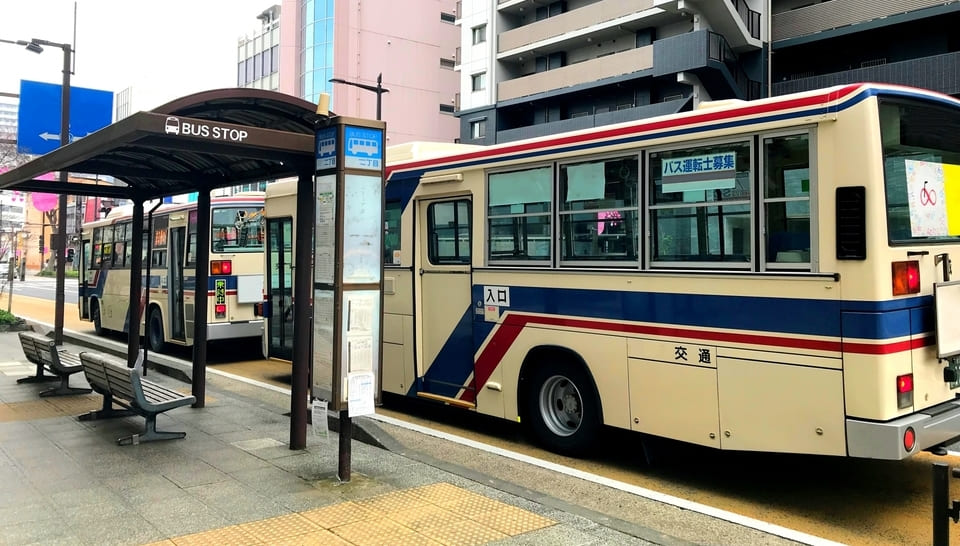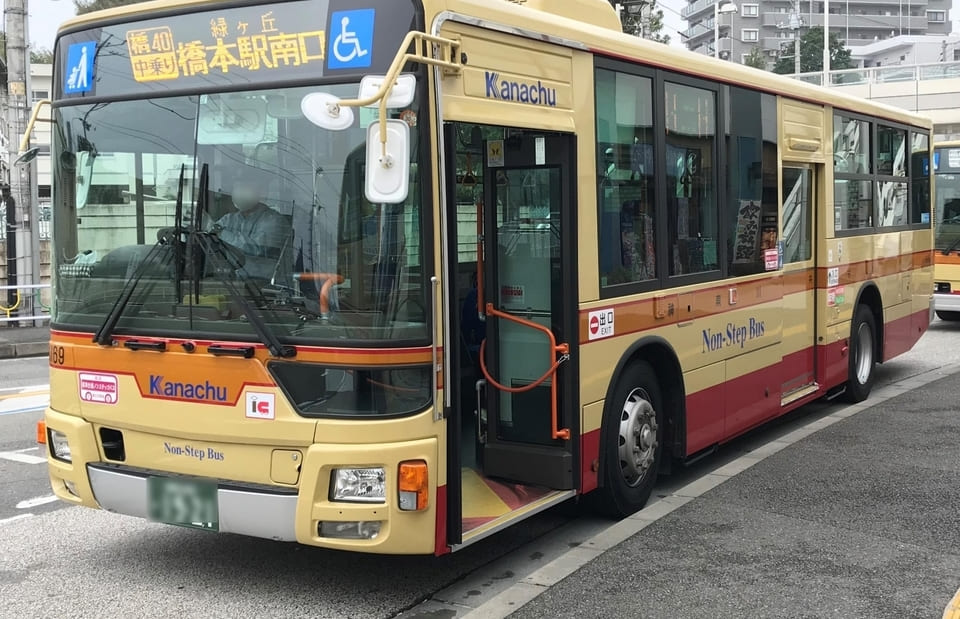When going to areas where there is no train station, many people will use a local bus. It is cheaper than a taxi and does not require a car license.
However, you may find it more difficult than a train to use a bus. Bus stops are difficult to find, and how to get on a bus is different in areas.
In this article, we will explain how to use the bus that is often confusing, including how to read the timetable, how to get on, and how to search the route to the destination.
Bus Stops and Timetable

You have to go to the bus stop to get on the bus. Depending on the direction of travel, there are bus stops with the same name across the road, so be careful not to line up in the opposite direction.
And, most bus stops have timetables. Weekdays and holidays usually have different times of bus arrival. In the image below, the timetable is indicated in three columns: weekdays, Saturdays, and Sundays.
Check the timetable and wait in line until your bus arrives.
If there are several timetables, the destinations and transits are different. So please be careful not to see the timetable of a bus that you are not taking. You can check the destination and transit on the display of each bus, which is on the front or side.
Source:How to use the Toei Bus | TOEI TRANSPORTATION
How to Get on a Bus
Route buses have different ways of getting on depending on the bus company and region, and the biggest difference is the timing of payment. There are two types of payment: postpaid and prepaid.
Postpaid Buses
Buses whose fare is determined according to how far you travel are postpaid. You will get a numbered ticket when getting on, and you will pay the fare according to the number when you get off.
There are two patterns of buses, one that uses the front door and the other that uses the rear door when boarding. Look at other passengers and imitate them.
Fares are displayed in the front of the bus. The fare for each number will change each time you pass the bus stop. The further you travel, the higher the price will be.
To get off the bus, press the drop-off button. Please note that if no one presses the button and no one is waiting at the bus stop, it will be skipped without stopping.
When the bus stops, put the fare with the numbered ticket in the fare slot near the driver’s seat. After paying, let’s get off from the front door.
Prepaid Buses
In areas such as Tokyo, Yokohama, and Kyoto, a fare amount is fixed regardless of distance. In this type of bus, you will usually pay the fare when you get on.
In this case, board the bus from the front and use the door at the back when getting off.
Source:How to use the Toei Bus | TOEI TRANSPORTATION
Source:How to use the Toei Bus | TOEI TRANSPORTATION
As with postpaid buses, push the drop-off button to get off. You don’t need to check the fare amount each time, so this is easier.
Payment by an IC Card
It is convenient to pay with an IC card for route buses that accept transportation IC cards such as Suica and PASMO.
For a postpaid bus, touch the reader near the numbered ticket issuing machine with the IC card when boarding. When you get off, touch the reader near the fare slot with the IC card. The fare will be calculated automatically and deducted.
In the case of prepaid buses, payment will be completed by touching the reader with the IC card when boarding, as the fare is fixed.
Payment by Cash
The bus fare is about several hundred yen, but basically, you should pay exactly.
If you don’t have enough coins to pay exactly, coins and 1,000-yen bills can be exchanged by telling the driver in most cases, but it is safer to prepare your coins.
5,000 yen or 10,000 yen bills are not likely to be exchanged into coins. If you only have these banknotes, consider preparing coins by making a small purchase in advance.
Manners in Buses
Here are some good manners that you should keep in mind when getting on a bus.
Hold a Strap or Handrail When Not Seated
If the bus seats are full, hold on a strap or handrail. You can prevent falling due to sudden braking or curves.
Refrain from Moving Around or Exchanging Money While the Bus is in Motion
If you move around while the bus is in motion, you may fall. Also, if you exchange your money when the bus is running, there will be a risk that the driver may not be able to concentrate on driving.
Be sure to move around or exchange money only when the bus stops at the bus stop.
Offer Priority Seats to the People Who Need It
Like trains, buses have priority seats. If someone with a disability, the elderly, or a pregnant woman is on board, it will be appreciated to give it away.
Refrain from Talking on the Phone
Some people may mind talking on the phone on the bus, so we recommend you to refrain from it except for an emergency.
How to Find Your Route and Fare to Your Destination
There are so many bus stops and the routes are complicated, so we highly recommend you to use a tool to find them.
For finding routes and fares, Google Maps is convenient. If you search the route, it will also tell you which bus to take. You can also use it to search for train routes.
Though the bus companies and areas are limited, you can also search for bus routes in English on the following sites. If you know the bus stop to use, please try them.
Conclusion
Route buses are a bit more difficult to use than trains, but they are a very convenient way of transportation when going to areas without stations or when a train stops in an accident.
It is rare that a postpaid bus and a prepaid bus are both available in one area, so getting used to the one which is available in your area is almost good enough.
When you take a local bus in a far area, please be careful as it may be a different type of bus.

